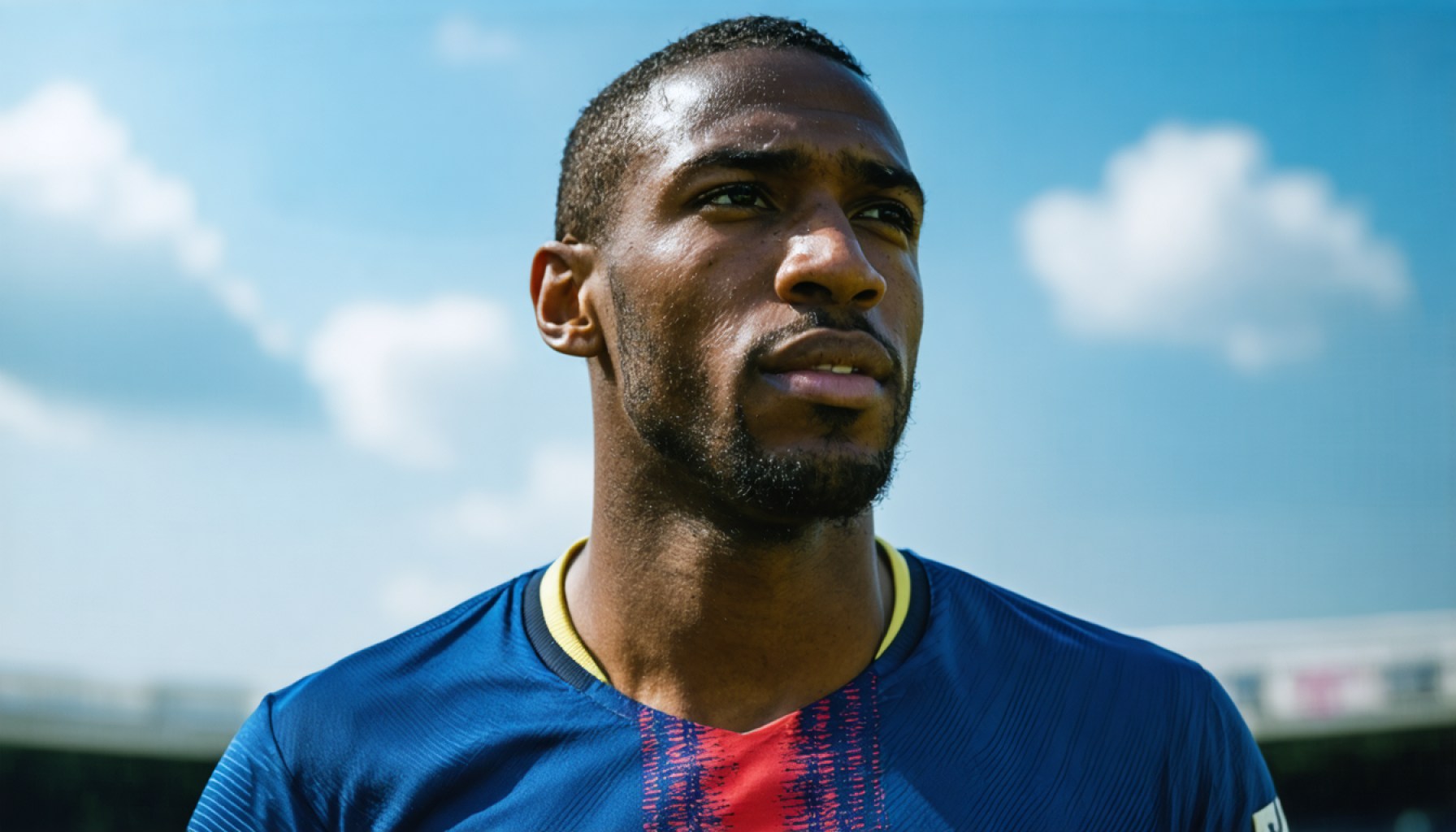- Geoffrey Kondogbia explores a transition from midfield to defense, blending his skills in both areas.
- This role shift wasn’t driven by new arrivals but by a premeditated tactical plan.
- Kondogbia embraces the change as an opportunity to enhance defensive strategy with his midfield finesse.
- His unique position challenges traditional roles, highlighting modern football’s fluid dynamics.
- Despite his natural inclination towards midfield, Kondogbia finds excitement in the dual-role challenge.
- The coach develops a system that integrates Kondogbia’s defensive solidity with a midfielder’s touch.
- This shift reflects football’s evolving demands for adaptable and strategic players.
The echoes of the transfer window’s final act linger, casting a fresh narrative for Geoffrey Kondogbia. Fans expected a bolstering of the defense, yet it was Ismaël Bennacer’s midfield prowess that graced the team, subtly redefining dynamics on the field. While anticipation buzzed around Bennacer, an internal recalibration had already taken root.
Before Bennacer made his impactful entry, strategic dialogues had unfolded. Kondogbia found himself discussing an intriguing possibility with teammates and coaches alike—transitioning from his familiar midfield terrain to a defensive bastion. This prospective shift wasn’t spurred by new arrivals but stemmed from a tactical vision charted earlier in the season.
Kondogbia approached this evolution in position not as an enforced duty but as an opportunity to blend his midfield instincts with defensive demands. His adaptability became apparent when the pen touched the tactical whiteboard, drawing pathways that merged his midfield agility with defensive duties. This role offers him a chance to infuse the defensive line with his ball control finesse, transforming exits from defense into strategic thrusts akin to midfield maneuvers.
Embracing the essence of a versatile footballer, Kondogbia navigates these waters with equanimity. Like anyone with midfield inclinations, there’s a natural pull towards the center of the pitch where creativity flourishes. Yet, in his new defensive realm, there’s a subtle artistry at play—defensive arcs built on midfield precision, shifting perceptions of what a defender can be.
Kondogbia finds the rhythm. Although he confesses a deeper connection to midfield dynamics, the challenge of this dual-role excites him, providing a fresh perspective. The coach crafts a system that finely balances defensive solidity with the fluidity of a midfielder’s touch, creating a role that satisfies Kondogbia’s appetite for strategic depth and involvement.
In a sport where constant adaptation is key, Kondogbia’s journey reflects the essence of modern football’s demands—fluid roles dictated by strategic insight rather than mere necessity. His newfound position challenges the conventional, reminding us that the lines between defense and attack are as much about mindset as about markers on a field.
Is Transitioning to Defense the Right Move for Geoffrey Kondogbia?
The Evolution of a Midfielder: Kondogbia’s Defensive Transition
Geoffrey Kondogbia’s potential transition from central midfield to a defensive role highlights the increasingly fluid nature of modern football. Kondogbia’s situation isn’t just about filling gaps but capitalizing on his unique skill set to offer different tactical advantages. Let’s delve deeper into the implications of this positional shift and what it means for teams and players.
Insights & Predictions for Kondogbia’s New Role
1. Tactical Flexibility: Kondogbia’s move to defense can provide his team with greater flexibility. His ability to break the lines with passes and carry the ball out of defense could turn defensive actions into offensive opportunities. This mirrors the emerging trend of center-backs playing an integral role in a team’s offensive play, akin to players like Aymeric Laporte and John Stones.
2. Midfield Instincts in Defense: Bringing midfield instincts into a defensive role offers advantages such as:
– Enhanced Ball Control: Better possession and distribution from the back.
– Strategic Build-Up: Allows for strategic initiation of attacks, maintaining the team’s form and structure.
– Increased Transition Speed: Quick transition from defense to attack, crucial in high-paced modern football.
3. Challenges and Considerations:
– Adaptation Period: Adjusting to the physical and mental demands of defending, including spatial awareness and marking, which differ from midfield play.
– Defensive Reliability: Ensuring that offensive contributions do not compromise defensive solidity.
– Team Dynamics: New team roles and responsibilities must be established to complement this change.
Real-World Use Cases & Market Trends
Transitioning roles are gaining traction, as versatility becomes a coveted trait in players. For example, Manchester City’s use of players in hybrid roles underlines this trend. Kondogbia’s move is in line with how clubs seek multipurpose players who can fluidly change positions based on the game’s needs.
Expert Opinions
Football analysts praise the innovation in such strategic transitions. Former players and analysts on platforms like Sky Sports have often highlighted the need for adaptability as a significant advantage in current football paradigms.
Actionable Recommendations for Players Considering Role Changes
– Develop Multidimensional Skills: Strengthen various aspects of your game beyond your primary role, from defensive tactics to attacking plays.
– Study Game Dynamics: Understanding the game beyond your current role helps in adapting quickly.
– Collaborate Closely with Coaches: Open communication can create tailored training plans to facilitate smooth transitions.
Quick Tips for Fans and Aspiring Footballers:
– Observe Matches of Versatile Players: Analyzing players like Joshua Kimmich or Trent Alexander-Arnold can provide insights into successful role transitions.
– Follow Team Strategies: Stay informed about your favorite teams’ tactical approaches to understand player positioning and strategies.
For continuous updates and insights on the latest football trends, visit ESPN.
Kondogbia’s role transition is a microcosm of football’s evolving landscape, emphasizing the importance of adaptability and strategic innovation. Embracing such changes can redefine player expectations and the game itself.
